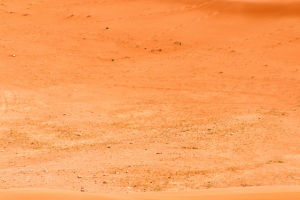Who says lakes are only blue? These 5 lakes in the world have been covered with gorgeous natural pigments by the sky, breaking people's stereotypes about lakes with their bizarre and charming water scenery.
Some of them are like pink bubbles, some are colorful, and some can perfectly reflect the sky image on the ground. Check out these amazing lakes with this article!
1. Lake Hillier
Located on Middle Island off the coast of Esperance in Western Australia, Lake Hillier, which is dyed like pink bubblegum, has always been a pilgrimage site for travelers.
The length of the lake is about 600 meters, and it is separated from the blue Southern Ocean by a narrow belt of sand dunes. There is lush vegetation everywhere.
If you look down from above, you will see the pink of the lake, the blue of the sea, the green of plants, and the white of the beach, which outlines a peerless beauty.
The cause of the pink lake is still a mystery, and some scientists speculate that it may be from the pigment produced by bacteria in the salt crust.
2. Salar de Uyuni
Salar de Uyuni, known as the "mirror of the sky", has become a "must-visit in this life" for many travelers. It is the largest Salt Lake in South America and even the world.
It covers an area of 9,065 square kilometers and is also one of the highest salt lakes. It is located in Bolivia. On the Altiplano plateau in the southwest.
Due to the flat terrain and the thin water layer in the rainy season, the Salar de Uyuni can perfectly reflect the sky image after the rain. Whether it is a white cloud, a blue sky, or a starry night sky, it will appear on the salt marsh like a mirror, which is extremely dreamy.
3. Green Lake
Green Lake is located in the small town of Tragoess in Styria, Austria, surrounded by the Hochschwab and the jungle. As its name suggests, the lake is clear and green.
Green Lake is a park surrounded by snow-capped mountains every year after fall. Many tourists come to the lake for hiking and outings. However, as the temperature rose in spring, the snow on the foothills began to melt and flowed down the hillside into the basin where Cuihu Lake is located, increasing the water depth from 2 meters to 12 meters.
The park was submerged in melting ice and became an "underwater park". The visibility of the clear water is extremely high, so tourists like to dive into the bottom of the water in summer, and it is really interesting to see the benches, bridges and plants, and trees at the bottom of the water.
4. Jelly Fish Lake
Palau, which consists of more than 300 islands, is known as a diving paradise and has been selected as a must-see country by Lonely Planet. The most popular one here is JellyFish Lake!
It used to be part of the sea and was gradually isolated from the outer sea due to crustal movement, forming an inland saltwater lake. Most of the organisms in the lake perished with the depletion of nutrients, leaving only one marine organism that survived on a small number of microorganisms, that is, jellyfish.
When natural enemies die, the weapons jellyfish use to defend themselves is also "lost". Nowadays, the jellyfish in Jelly Fish Lake are not poisonous. Whenever the sun shines, they will surface in groups for photosynthesis. The scene is quite spectacular.


